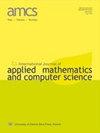对正数据和未标记数据的逻辑回归拟合策略的重新审视
IF 1.6
4区 计算机科学
Q3 AUTOMATION & CONTROL SYSTEMS
International Journal of Applied Mathematics and Computer Science
Pub Date : 2022-06-01
DOI:10.34768/amcs-2022-0022
引用次数: 1
摘要
正未标记(PU)学习是许多应用中由于部分可观察性的出现而引起的一个重要问题。本文重新考虑了基于经验似然最大化的PU数据参数化建模的最新进展,并认为它们可以得到显著改进。该方法基于逻辑拟合和未知标记频率的似然可以明确地表示为凸函数和凹函数的和这一事实。这允许应用诸如凹凸过程(CCCP)或其变体,纪律凹凸过程(DCCP)之类的方法。我们通过分析真实数据集表明,通过使用DCCP来解决优化问题,我们在后验概率和标签频率估计方面比最佳可用竞争对手有了显著的改进。本文章由计算机程序翻译,如有差异,请以英文原文为准。
Revisiting Strategies for Fitting Logistic Regression for Positive and Unlabeled Data
Abstract Positive unlabeled (PU) learning is an important problem motivated by the occurrence of this type of partial observability in many applications. The present paper reconsiders recent advances in parametric modeling of PU data based on empirical likelihood maximization and argues that they can be significantly improved. The proposed approach is based on the fact that the likelihood for the logistic fit and an unknown labeling frequency can be expressed as the sum of a convex and a concave function, which is explicitly given. This allows methods such as the concave-convex procedure (CCCP) or its variant, the disciplined convex-concave procedure (DCCP), to be applied. We show by analyzing real data sets that, by using the DCCP to solve the optimization problem, we obtain significant improvements in the posterior probability and the label frequency estimation over the best available competitors.
求助全文
通过发布文献求助,成功后即可免费获取论文全文。
去求助
来源期刊
CiteScore
4.10
自引率
21.10%
发文量
0
审稿时长
4.2 months
期刊介绍:
The International Journal of Applied Mathematics and Computer Science is a quarterly published in Poland since 1991 by the University of Zielona Góra in partnership with De Gruyter Poland (Sciendo) and Lubuskie Scientific Society, under the auspices of the Committee on Automatic Control and Robotics of the Polish Academy of Sciences.
The journal strives to meet the demand for the presentation of interdisciplinary research in various fields related to control theory, applied mathematics, scientific computing and computer science. In particular, it publishes high quality original research results in the following areas:
-modern control theory and practice-
artificial intelligence methods and their applications-
applied mathematics and mathematical optimisation techniques-
mathematical methods in engineering, computer science, and biology.

 求助内容:
求助内容: 应助结果提醒方式:
应助结果提醒方式:


